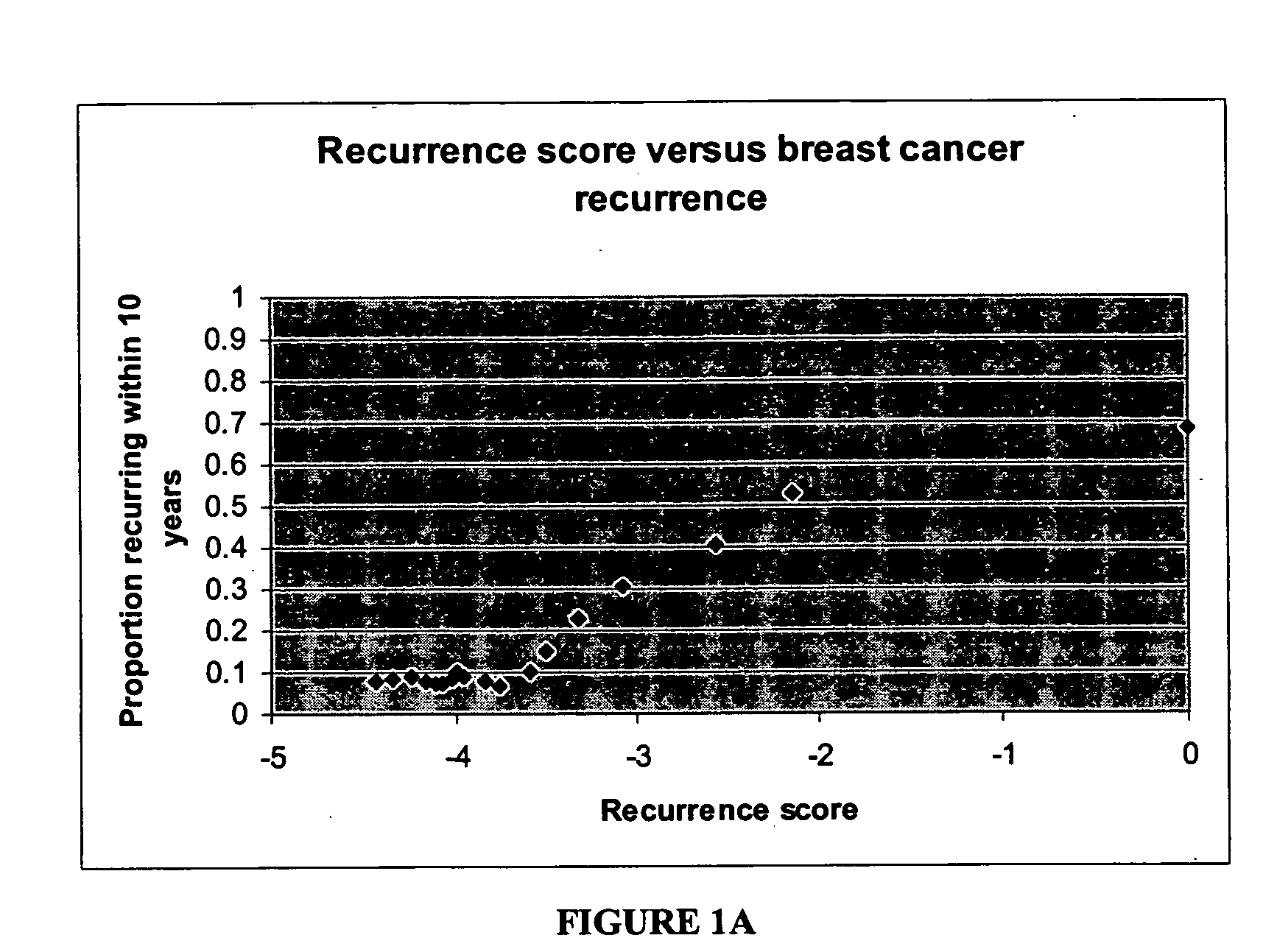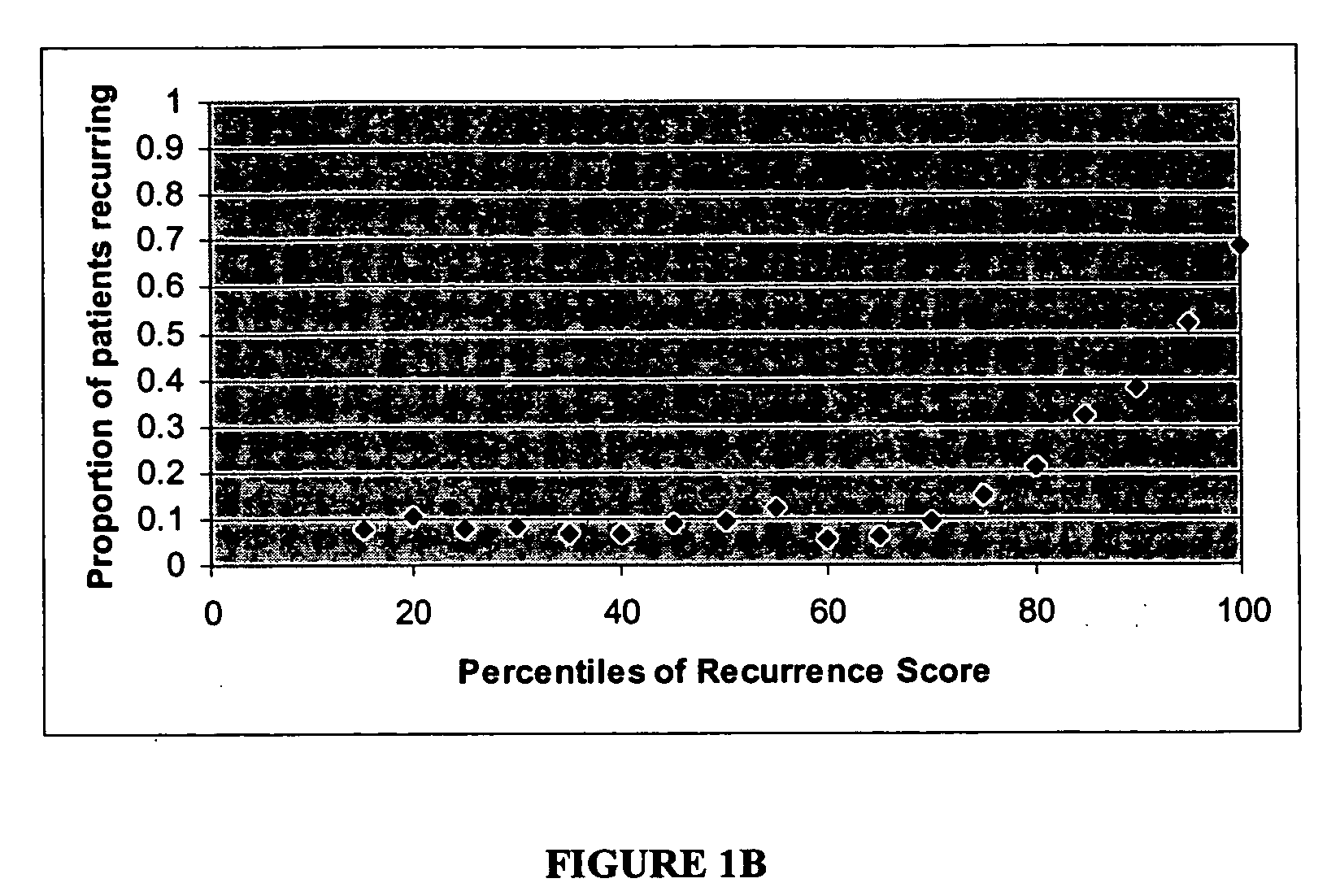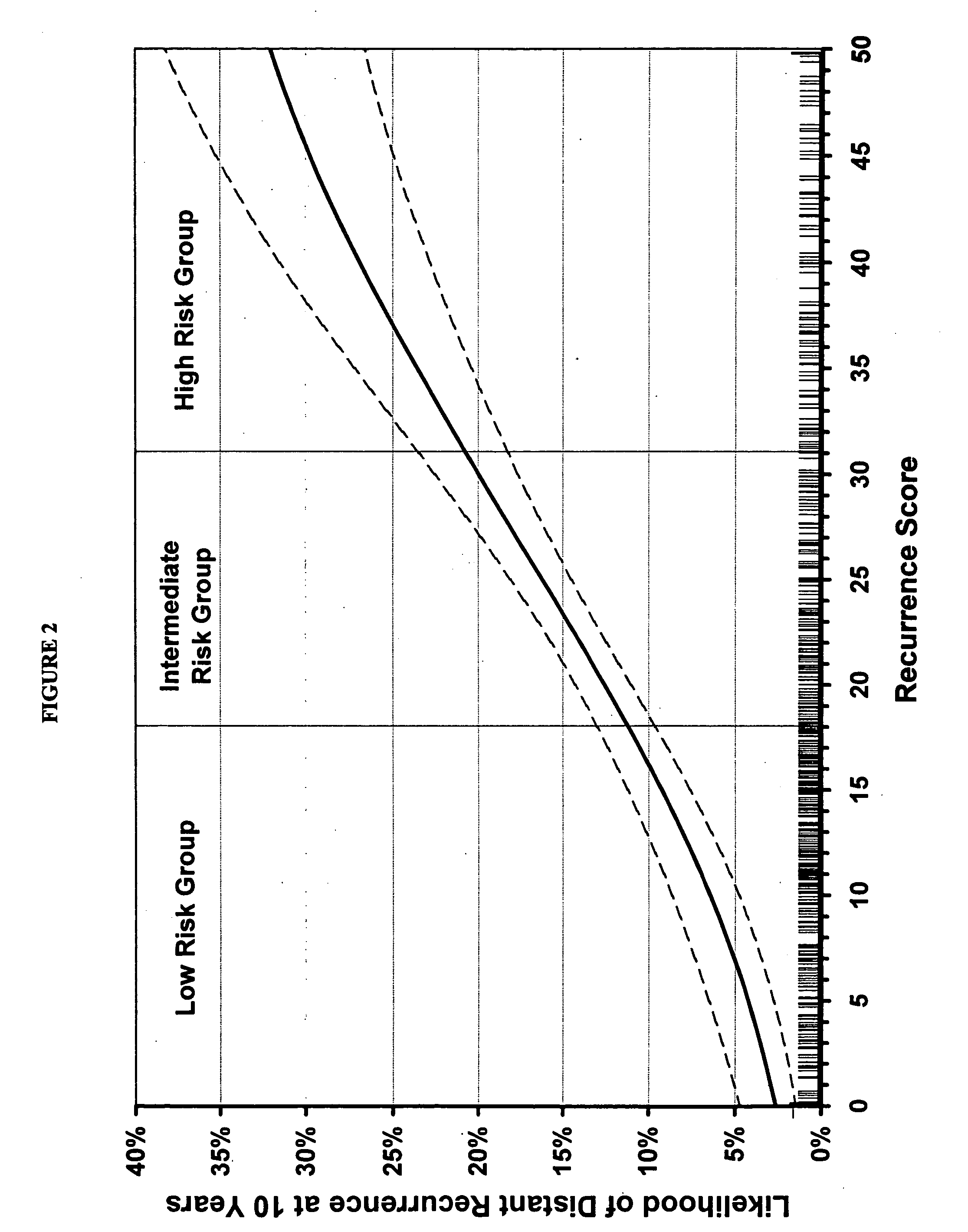Expression profile algorithm and test for cancer prognosis
a technology of expression profile and prognosis, applied in the field of expression profile algorithm and test for cancer prognosis, can solve the problems of cellular and molecular heterogeneity, low efficiency of current cancer treatment agents, and inability to exploit the status of these genes for the purpose,
- Summary
- Abstract
- Description
- Claims
- Application Information
AI Technical Summary
Benefits of technology
Problems solved by technology
Method used
Image
Examples
example 1
[0126] Algorithm to Predict Breast Cancer Recurrence
[0127] The algorithm is based on measurements of the tumor levels of 16 mRNA markers, which were selected by two major criteria: 1) univariate correlation with breast cancer recurrence in the clinical study described below, and 2) implication in tumor pathology as indicated by published scientific literature.
[0128] The selected markers indicate roles of several cellular behaviors and pathways in cancer recurrence: e.g., Her2 growth factor; estrogen receptor, proliferation, and invasion. Consistent with current understanding of the molecular pathology of breast cancer, increased levels of mRNAs representing genes in the growth factor, proliferation, and invasion axes correlate with increased risk of recurrence whereas increased levels of mRNAs representing genes in the estrogen receptor axis correlate with reduced risk of recurrence. Relevant genes in these pathways are not only linked by biological function, but also linked by co-e...
example 2
[0158] Study of Gene Expression in 242 Malignant Breast Tumors
[0159] A gene expression study was designed and conducted to determine recurrence score (RS) values in a population of patients with node-negative invasive breast cancer and explore the correlation between RS values and disease-free survival. The study utilized archived fixed paraffin-embedded tumor blocks as a source of RNA and matched archived patient records.
[0160] Study Design:
[0161] Molecular assays were performed on paraffin-embedded, formalin-fixed primary breast tumor tissues obtained from 252 individual patients diagnosed with invasive breast cancer. All patients were lymph node-negative, ER-positive, and treated with Tamoxifen. Mean age was 52 years, and mean clinical tumor size was 2 cm. Median follow-up was 10.9 years. As of Jan. 1, 2003, 41 patients had local or distant disease recurrence or breast cancer death. Patients were included in the study only if histopathologic assessment, performed as described in ...
example 3
[0167] Validation of the Algorithm of the Invention
[0168] A prospective clinical validation study was conducted to examine the performance of a multi-gene RT-PCR assay for extracting and quantifying RNA from fixed paraffin embedded tumor tissue in patients enrolled in the tamoxifen alone arm of the National Surgical Adjuvant Breast and Bowel Project (NSABP)
[0169] Study B-14: A Laboratory Study To Clinically Validate Whether Genomic Tumor Expression Profiles Can Define The Likelihood Of Recurrence In Patients With Primary Invasive Breast Cancer, Negative Axillary Nodes And Estrogen-Receptor Positive Tumors. The NSABP Study B-14 was conducted to assess the efficacy of post-mastectomy tamoxifen treatment in node-negative primary breast cancer patients and included a total of 2,892 patients who qualified and were treated for five years. The protocol was carried out in a randomized, double-blind manner with one set of patients receiving tamoxifen at a dose of 10 mg twice a day and a cont...
PUM
| Property | Measurement | Unit |
|---|---|---|
| size | aaaaa | aaaaa |
| temperature | aaaaa | aaaaa |
| pH | aaaaa | aaaaa |
Abstract
Description
Claims
Application Information
 Login to View More
Login to View More - R&D
- Intellectual Property
- Life Sciences
- Materials
- Tech Scout
- Unparalleled Data Quality
- Higher Quality Content
- 60% Fewer Hallucinations
Browse by: Latest US Patents, China's latest patents, Technical Efficacy Thesaurus, Application Domain, Technology Topic, Popular Technical Reports.
© 2025 PatSnap. All rights reserved.Legal|Privacy policy|Modern Slavery Act Transparency Statement|Sitemap|About US| Contact US: help@patsnap.com



